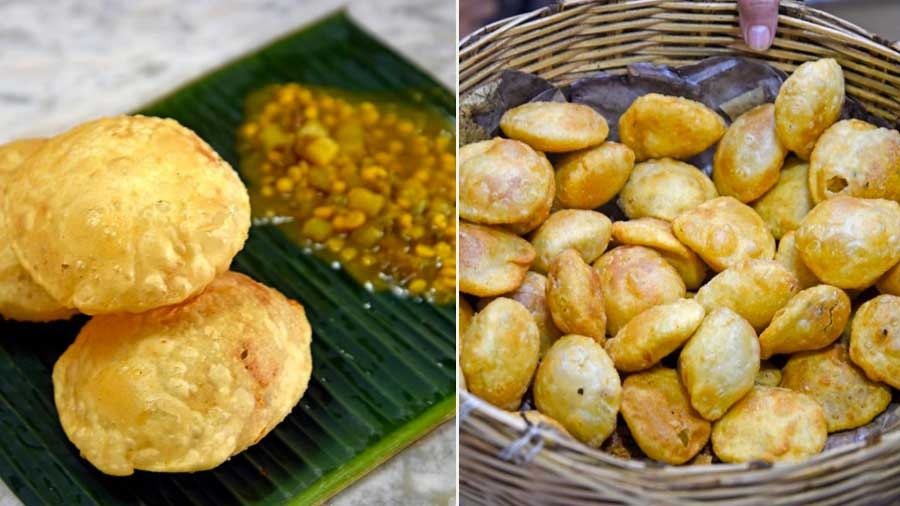The word paratha comes from two words — parat meaning ‘layers’ and atta meaning flour. While the fried staple is usually associated with north Indian cuisine, the paratha has made its place in many forms throughout the palate of the country. As the regions change, so does the pronunciation and cooking method. In Bengal, it is known as porota.
The Bengali ‘porota’
When speaking of the Bengali porota, the first image that comes to mind is the toasty triangular breakfast and evening meal staple, made in most home kitchens and a feature of most lunch boxes. Usually made with a mix of maida and atta, the porota has a permanent and beloved place in the Bangali household.
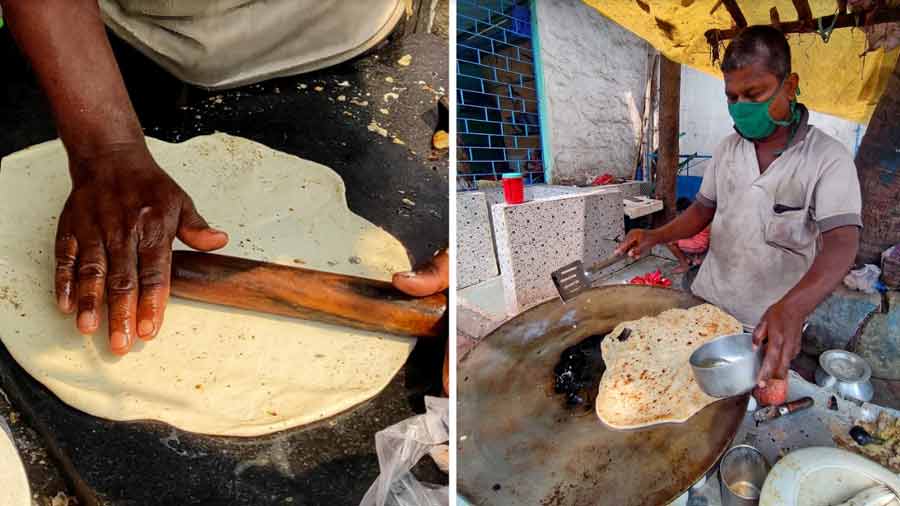
It takes culinary skill and the right mix of ingredients to make the perfect 'porota' with a flaky, crispy exterior but soft enough to tear into Amit Datta
Some believe that the porota rose in relevance because it used much less oil than the deep-fried luchi. It is the amount of oil or ghee used, both in the dough and to fry the paratha that determines the ideal crunch. The perfect porota — unless it is the softer triangular one — must have a flaky, crispy exterior, but be soft enough to tear into. With time, the porota has evolved to include the stuffed variety.
All things considered, every kind of porota requires patience and skill, and almost every variety will warrant the pet roga Bangali reaching for an antacid. There’s one porota, however, that has made a name for itself as being an exclusive street-food delicacy and it fits very well with the Bengali saying “Ojon maapa bhojon” (Consumption in proportion to weight) because it is sold not by piece but by weight. This is the crunchy-soft petai porota.
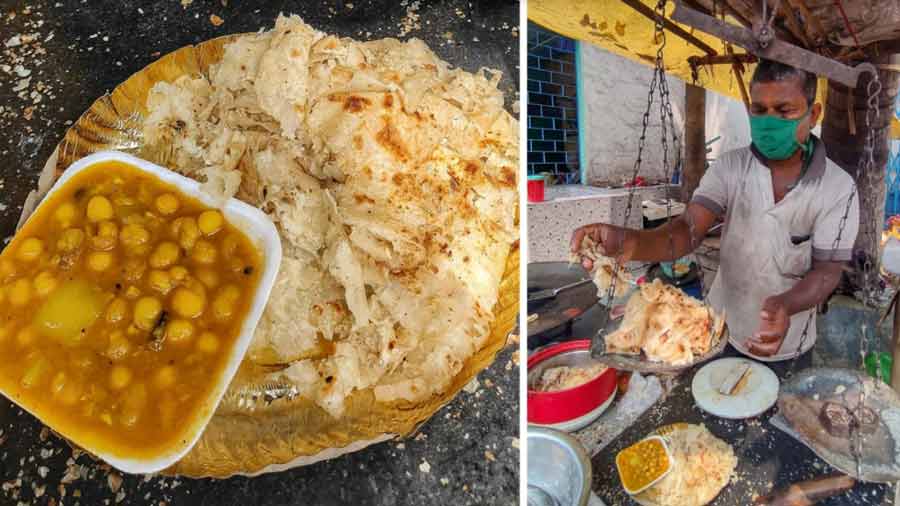
The 'petai porota' is sold not by piece but by weight and has a fixed price for every 100gm Amit Datta
The street food special ‘petai porota’
The petai porota shows off Bengal’s expertise in porota making. Petai, as you might have guessed, refers to ‘a beating’ and this unique porota gets this name from the way it is served. A large paratha made with a well-rested maida dough is fried to a crispy perfection. Then, the still warm paratha is beaten and slapped down, pulled apart into small flaky and soft bits, and served with hot ghugni.
The petai porota is a sumptuous, inexpensive and wholesome meal that grew to become a favourite of daily office commuters from in and around Kolkata who took the train to work. Shops and stalls selling the dish first came up outside railway stations and along highways, but soon made their way into Kolkata.
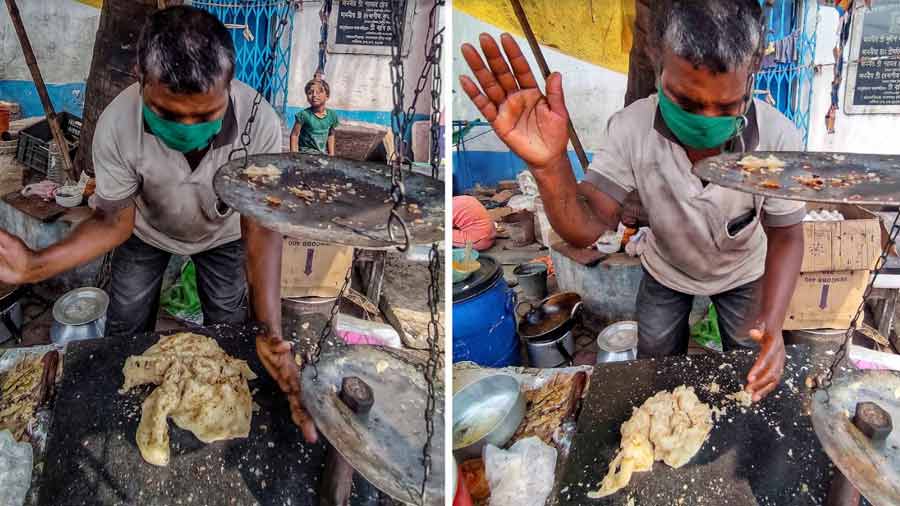
The 'petai porota' gets its name from the beating or 'petai' of the fried paratha before it is served Amit Datta
Apart from its preparation, the other unique thing about the petai porota is that it is sold by weight. The seller weighs the crushed porota before placing it on the serving plate with the ghugni. One porota often ends up being divided among a few people. One can always order another if they wish, but typically the hearty 100gm serving makes for a fulfilling meal.
The texture of the thin, crunchy bits of the crushed porota with spicy, hot ghugni offers a unique gastronomical experience. This is one Kolkata meal that no delivery apps can bring to your doorstep either, because the petai porota is best consumed fresh and often sold in small makeshift shops or stalls.
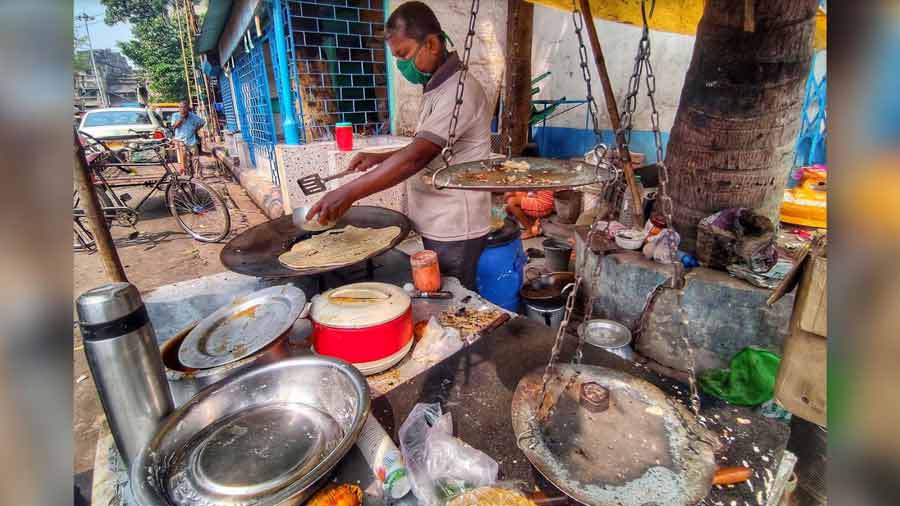
Robi Das has been selling 'petai porota' from his stall at Bagbazar for 10 years Amit Datta
The Bagbazar ‘porota’ man
Robi Das has been selling petai porota at Bagbazar for the last 10 years. His shop is just beside the gate to the grounds of Bagbazar Sarbojonin. Das charges Rs 15 for 100gm of porota and a bowl of ghugni. He learnt the skill of making this paratha from the stalls where he hiumself used to eat petai porota. “The making of the dough, rolling of the porota, frying and then crushing require skill and patience,” he says.
The pandemic affected the sales of his little stall, however things are slowly opening up again and people are returning. The flow of customers is not the same as before, Das mentions, but hopes things will get better soon.
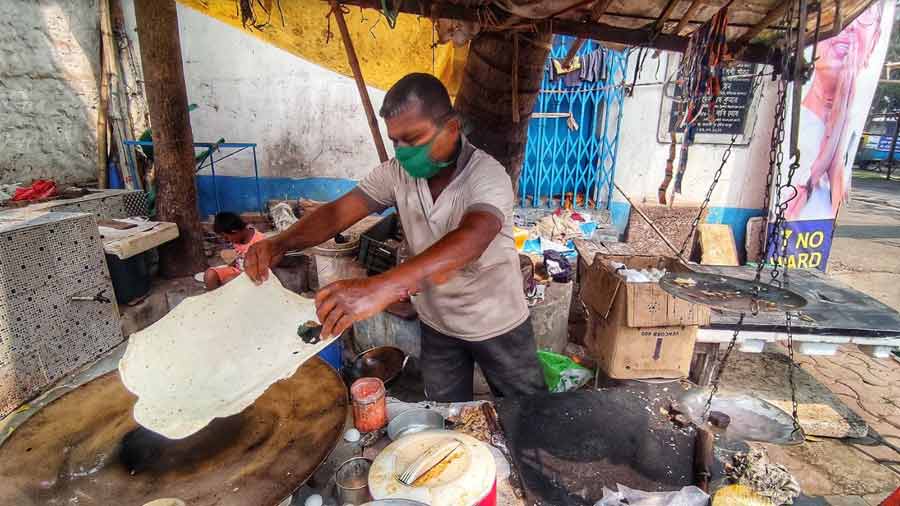
One large 'petai porota' is usually enough to make plates of the dish for a few people Amit Datta

